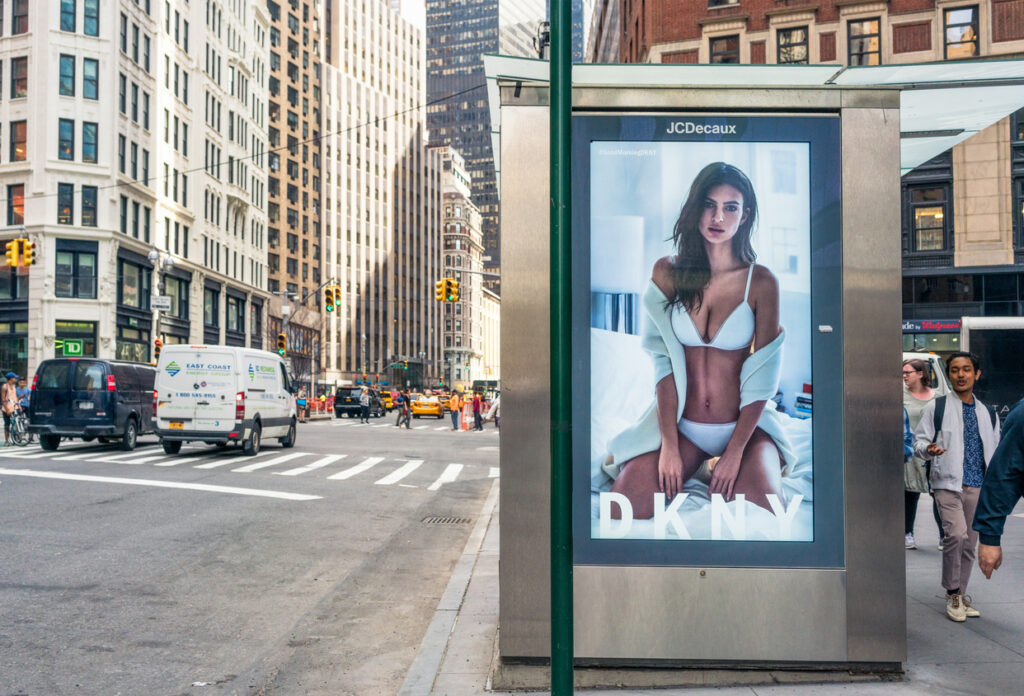The best New York fashion designers
As one of the world’s fashion capitals, New York is a mecca for style enthusiasts. It’s home to some of the world’s most prestigious luxury department stores and designer flagship boutiques, as well as eclectic vintage stores and independent markets. Leading fashion publications like Vogue and Harper’s Bazaar have their roots firmly planted near the city’s Garment District. Industry leaders flock to the city twice a year for New York Fashion Week, where emerging talents and legendary designers alike unveil the creations that influence trends all over the world.
Even away from the official headquarters of the industry’s biggest names, fashion is immersed in the city streets. New Yorkers are known for being some of the nation’s most stylish people; you can often spot impeccably dressed residents turning the streets into their personal catwalks. Budding designers from across the globe move here to make a name for themselves, typically honing their craft at prestigious institutions like Parsons School of Design or the Fashion Institute of Technology (FIT).
It’s no surprise that many of America’s most prominent designers have built their brands in the city. In this article, we’ll be sharing the stories of 6 of the city’s most talented fashion designers and their impact on the industry.
Marc Jacobs
With an aesthetic as captivating as New York itself, Marc Jacobs infuses his rebellious yet playful personality into all of his designs.
Born and raised around the New York tri-state area, Jacobs settled in Manhattan to study fashion at the High School of Art and Design and Parsons. He left Parsons with honors, winning the Design Student of the Year award at his 1984 graduation before going on to work for Perry Ellis. He refocused on his own label after releasing the controversial Perry Ellis grunge collection in1993 that won over fans but displeased stakeholders.
By 1997, Jacobs was appointed the creative director of esteemed French fashion house Louis Vuitton. The designer has been credited with revitalizing the brand, introducing womenswear for the first time and reimagining the classic LV logo in a more bold and youthful way. Jacobs has since stepped back to focus on his own line—Marc Jacobs and diffusion line Marc by Marc Jacobs—which are both known for their use of vibrant colors, prints, witty slogans and distinctive logos.
Michael Kors
Tapping into the glamorous side of fashion, New York native Michael Kors creates sophisticated designs to complement a jet set lifestyle.
The FIT alumnus was inspired to create his own line after working at an upscale boutique, and in 1981 the Michael Kors brand was born. He launched a collection of luxurious crêpe de chine dresses and leather goods that has since expanded into a multi-brand conglomerate of clothing, accessories, footwear, jewelry, eyewear, and fragrances. Kors takes pride in creating clothing that ‘women actually want to wear’, emphasizing timeless designs with clean lines and feminine silhouettes.
While creating beautiful designs have always been important to Kors, he has also been strategic about his image and partnerships. Kors turned into a household name by starring as a judge on the hit fashion TV show Project Runway, and boasts an impressive clientele featuring celebrities and political figures such as Michelle Obama, Oprah, and Nicole Kidman.

Calvin Klein
A leader of the 90s minimalist movement, Calvin Klein proves that less is often more when it comes to style. The Bronx-born designer loved fashion from an early age thanks to his tailor grandmother. He went on to study at the High School of Art and Design and FIT before interning with suiting manufacturer Dan Millstein, and launched his own company in 1968. By the following year, his designs were already featured on the cover of Vogue.
Klein’s understated clothing reached peak popularity in the 80s and 90s thanks to his simple yet provocative ad campaigns, featuring supermodels and celebrities like Kate Moss, Mark Wahlberg, and Brooke Shields often wearing nothing but Calvin Klein underwear. Today the brand is still a staple for lovers of minimalist fashion.
Donna Karan
As the queen of ‘uptown chic’ dressing, Donna Karan was one of the first designers to make clothing that modern women could truly relate to in a male-dominated industry.
She grew up surrounded by the New York fashion scene, born in Queens to a model mother and a tailor father. Karan began her fashion career in high school, working at a local boutique before being accepted into Parsons in 1968. Her talent was recognized just two years into her program when she was hired by Anne Klein as an assistant designer. Karan branched out on her own in 1984, launching an eponymous label catered to the contemporary New York working woman.
Her first collection was an early rendition of a modern capsule wardrobe. Called ‘Seven Easy Pieces’, it featured Karan’s key garments for her everyday life: a tailored jacket and pants, a skirt, a bodysuit, a cashmere sweater, a leather jacket, and an evening dress. The collection was well-received by industry experts and her target clientele. Karan has since won numerous awards and expanded her label into casual wear (her DKNY diffusion line) and fragrances.

Tom Ford
The go-to designer for femmes fatales and dapper gentlemen, Tom Ford is another Parsons alumnus that has made waves in the industry. Born in Austin, Texas, Ford moved to New York to study architecture before switching to fashion. He started out working for designer Cathy Hardwick before becoming the creative director of Italian heritage brand Gucci in 1990.
The decision was a surprise as Ford was still a newcomer to the industry, but the visionary designer saved the brand during one of its most challenging periods. Ford brought a sleek, sexy, modern edge to Gucci that brought it back to the forefront of the European luxury world.
Ford launched his own label in 2005 after 15 years at Gucci, which was well-received within the fashion world. His signature aesthetic is carried through each design, cultivating a loyal clientele including celebrities like Timothee Chalamet, Margot Robbie, and Naomi Campbell.
Alexander Wang
Often dubbed New York’s fashion wunderkind, Alexander Wang has become one of the world’s most influential designers in recent decades. The San Francisco native made the move to the east coast to attend Parsons at the age of 18, only to drop out and start his own label at 21. Wang debuted his first collection at New York Fashion Week in 2007 to rave reviews; championed by Vogue’s editor-in-chief Anna Wintour, he went on to win the coveted Vogue/CFDA Fashion Fund award the following year.

Wang is certainly one of fashion’s fastest success stories. His designs quickly became stocked in the world’s most renowned luxury department stores and boutiques. By 2012 he was appointed creative director of acclaimed French fashion house Balenciaga, a role he juggled alongside his eponymous label until 2015.
What made Wang stand out among his contemporaries was his ability to seamlessly cater to the new generation of fashion lovers. Known for an aesthetic that’s equal parts minimalist, sporty, and edgy, Wang helped catapult the athleisure trend into the mainstream. His pieces are chic yet wearable, especially for younger generations who have adopted a more laid back approach to fashion.
While his runway shows display more extravagant pieces like ankle-length fur coats and red carpet-ready dresses, his best-sellers are casual favorites like tracksuits, basic tops and t-shirts, and denim. Over the years, Alexander Wang’s essential pieces have become the unofficial off-duty uniform of celebrities, models, influencers, and other trendsetters.
Many luxury streetwear labels have cropped up since Wang’s rise to fame, cementing his status as the master of downtown dressing. With loads of celebrity fans like Zoe Kravitz, Lady Gaga, and Rihanna, Alexander Wang has pioneered a new era of luxury fashion.







